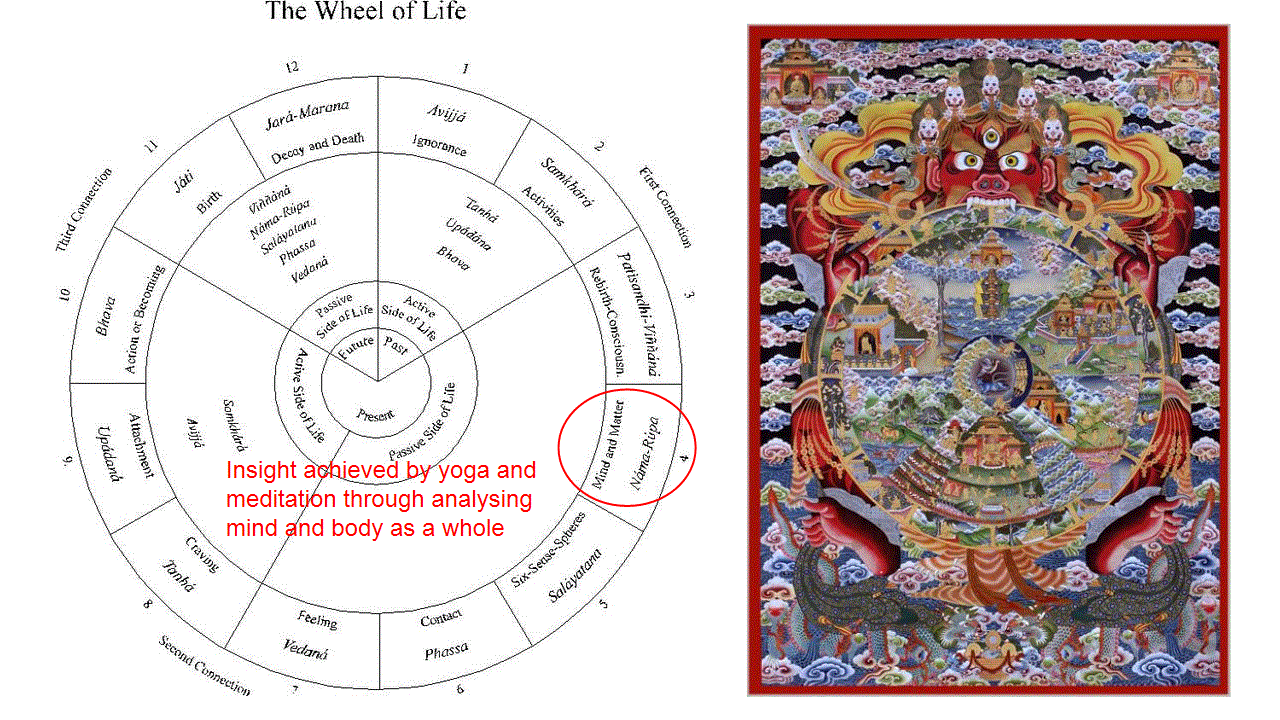
Human as sentient being is complex of mind and matter. Many religious traditions guide the way to achieve enlightenment. Yoga and Meditation is focus on dissociating and reintegrating the body, complex of mind and matter into individual factors between mind and body. What Buddhism says nama-rupa is the complex of mind and matter as body. Body could not be absolutely dissected by matter and mind. Yoga and meditation is the process of integrating the analysis of mind and body neither materialism nor spiritualism by practicing which results in insight covering the both.
Existence is seen as an interrelated flux of phenomenal events, material and psychical, without any real, permanent, independent existence of their own. These events happen in a series, one interrelating group of events producing another. The series is usually described as a chain of 12 links (nidanas, “causes”), though some texts abridge these to 10, 9, 5, or 3. The first two stages are related to the past (or previous life) and explain the present, the next eight belong to the present, and the last two represent the future as determined by the past and what is happening in the present. The series consists of: (1) ignorance (avijja; avidya), specifically ignorance of the Four Noble Truths, of the nature of humanity, of transmigration, and of nirvana; which leads to (2) faulty thought-constructions about reality (sankhara; samskara). These in turn provide the structure of (3) knowledge (vinnana; vijnana), the object of which is (4) name and form—i.e., the principle of individual identity (nama-rupa) and the sensory perception of an object—which are accomplished through (5) the six domains (ayatana; shadayatana)—i.e., the five senses and their objects—and the mind as the coordinating organ of sense impressions. The presence of objects and senses leads to (6) contact (phassa; sparsha) between the two, which provides (7) sensation (vedana). Because this sensation is agreeable, it gives rise to (8) thirst (tanha; trishna) and in turn to (9) grasping (upadana), as of sexual partners. This sets in motion (10) the process of becoming (bhava; bjava), which fructifies in (11) birth (jati) of the individual and hence to (12) old age and death (jara-marana; jaramaranam). paticca-samuppada
My thought, nama-rupa between the dash line should be divided and reintegrated by practicing the stage of yoga and meditation. Seeing and realizing: 1) nama-rupa, 2) nama and rupa as factors, 3) Renewal of nama-rupa.